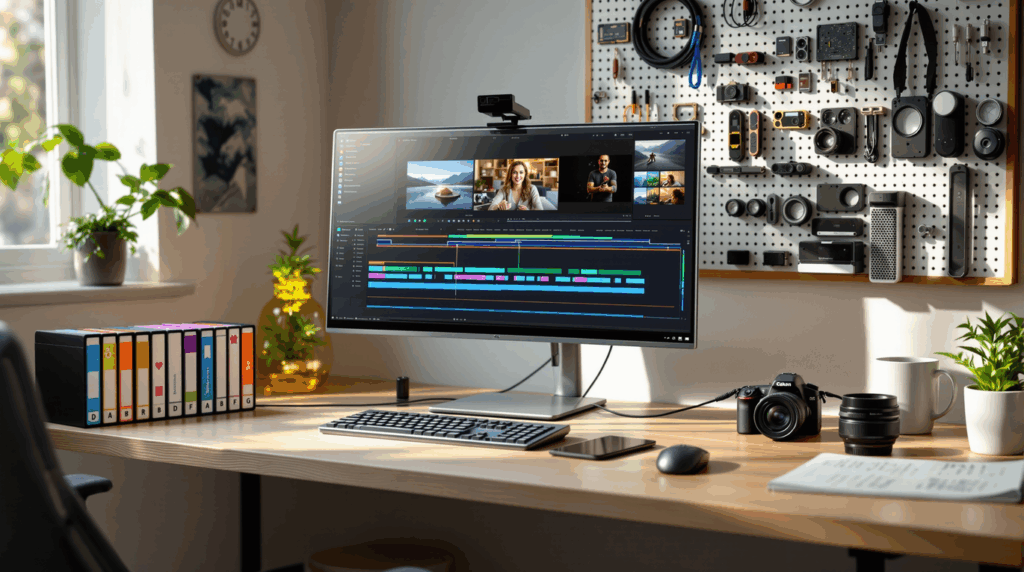AI dubbing sounds kind of redundant- Why go through the trouble of using software to dub your content if what you’ll get is a robotic voice completely devoid of emotion? How can you connect with a regional audience with a result that sounds so artificial? The truth is you can’t. But reducing all AI voices to ‘sounds like Siri’ vastly underestimates how far the technology has come. Here are a few examples. of AI speakers.
In 2022, AI dubbing can be a game-changer for your brand, provided you’ve determined that it is the right fit for you. In fact, a survey found that 42% of internet respondents said they never purchase products and services in other languages. So to determine whether AI dubbing suits your brand, let’s address the differences between dubbing using AI vs conventionally.

AI dubbing vs conventional dubbing
Here is how AI dubbing compares to conventional. For reference, conventional dubbing involves the use of a voice artist instead of a synthesized voice, as is the case in AI dubbing.
1. Efficiency : How fast and effortlessly can you dub?
One of the foremost benefits of AI dubbing is how fast it is. You can instantly repurpose thousands of videos within minutes across multiple languages. This turnaround time can quicken your business cycle, especially if you are known for putting out the same content on multiple language channels. This is a boon for certain businesses: sports channels that need multilingual narrators, e-learning platforms, walkthrough videos, online video lessons, and more.
Contrastingly, while the result can be fine-tuned a lot with conventional dubbing, the drawback is how long it takes. It can take a few days at least to render the same content in the language you desire. If you produce video content every week, this can become highly inefficient, stressful, and expensive. Note that you will also need to hire multiple language orators to dub your content across multiple languages manually. AI dubbing does away with these logistical funnels that can slow down the content production cycle.
2. Customizability: How tailored the output can be?
Another notable pro of AI dubbing is how customizable it is. Did you know you can customize the timbre, tone, accent, and other variables of AI voices? AI dubbing can help you identify the aspects of synthesized voices that suit your brand image. Whether you need a loud booming voice for the exciting announcement of a new product launch or a soft soothing voice to coax viewers to visit our website, you have customizability at your disposal with AI voices.
Similarly, conventional dubbing’s foremost advantage is that it helps you find the perfect fit for your brand. Human voices can be adjusted with far more feedback to the degree that you see fit. While finding enough multilingual voice artists to compare might be challenging, there is more room to make both major and minor adjustments with conventional dubbing to create the perfect dub. All in all, one takes longer but can be better finetuned, but both forms of dubbing can be edited to suit your brand image. Select the one you based on your brand’s needs.
3. Cost: How expensive is the whole AI Dubbing process?
65% of internet consumers desire content in their own language. As a brand looking to globalize, going multilingual might be your best investment. But with conventional dubbing, the costs can be neck to neck or even exceed the returns. Conventional dubbing for video content can cost up to $75/per minute. Conventional dubbing requires an incredibly versatile skillset: the talent of the voice actor, the audio and video engineering to lip-sync the dub that which is on the screen, and even the true-to-word translation.
AI dubbing can reduce these costs to a fraction of the original. Consider this example. At Dubverse, we give you the option to dub from your original language to over 30 Indian and global languages at the same time. Now, you can also add AI subtitles to the same videos in any language you please. Due to the scalability of AI dubbing, its price barely holds a candle to that of conventional dubbing. You also dont have to deal with the costs of reshoots, multiple renders, and finding the right soundproof environment which cuts down the costs of AI dubbing.
How to determine if AI dubbing is the right fit for your brand?
With all its benefits laid out, AI dubbing may not be the best fit for every brand. Think of it this way: The reason Alexa and Siri are popular is that they reiterate your grocery lists to you, not because they capture the emotion in your brand’s message. While AI voices are more human-sounding than we assume, they still cannot replace the skill set of a trained voice artist. As an example, the latter is more likely to be able to capture regional language intonation and the cultural nuances that come with a multilingual translation.
With that said, here are some tips to determine whether AI dubbing will benefit your brand:
- The intention of your content:
What is your audience looking for in your content?
Are you information-oriented as a brand?
Or is the success of your product or service dependent on creating an emotional connection with your audience?
In the former case, AI dubbing can be an effective way to scale your audience to regional niches,
while the latter case is better suited to conventional dubbing. - Your audience’s expectations:
What is your audience expecting from your content?
Consider the YouTube channel for Red Bull whose multilingual approach is NOT to dub content across new languages, but to connect with the niche hobbies of their target audience like surfing, biking, gaming, and more. - Your market and competitive edge:
Finally, within your industry, what is the scope for multilingual localization of content?
How well has it been occupied by your competitors?
Determine the competitive edge that AI dubbing will give you within your current market.
These tips can help you ascertain how to balance content quality with your budget, content localization with scalability, and efficiency of video production with fine-tuned results.



